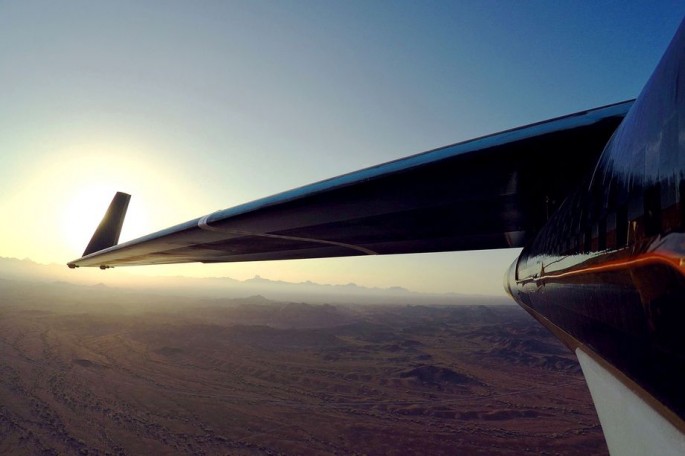Last June, Facebook launched its massive solar-powered drone for the first time. However, part of the wing snapped and the drone crashed right before it was about to land. After investigations, the National Transportation Safety Board has found that the incident was caused by strong winds.
A report issued by the NTSB states that the unmanned Facebook aircraft N565aQ, commonly called Aquila, "experienced an inflight structural failure on final approach near Yuma, Arizona. The aircraft was substantially damaged."
On the aircraft's final approach to its designated landing site, Aquila encountered winds with speeds of 12 to 18 knots, based on its telemetry. This caused the aircraft to suffer significant changes in pitch, roll and airspeed, which the Facebook team had not encountered earlier in simulations.
The autopilot system tried applying corrections after the events, lowering the aircraft's nose down, but it also increased its speed while trying to return to its pre-programmed landing course. Due to this chain of events, the drone's right wing experienced downward force that exceeded its structural limit and eventually broke off.
The Facebook Aquila drone was only scheduled to be airborne for 30 minutes for its initial flight, but the engineers decided to keep it afloat for another hour. Facebook CEO Mark Zuckerberg was present at the Arizona desert during the test flight, Recode reported.
The company plans to use similar Aquila drones to beam internet access to areas that lack the right infrastructure for connectivity. The plan is to keep the drones up in the air for 60 to 90 days. Since they rely heavily on sunlight for power, they do not need to refuel.
The unmanned aircraft has a wingspan that is more than what a Boeing 737 has. The drone also reached its intended test altitude, which is 2,150 feet, and flew steadily around the Yuma Proving Ground.
The drone project was announced last 2014 and took two years to develop. Right after the incident, the company has already started working on its updated version. The next drone is expected to include air brakes that will assist the autopilot system to better handle the landings.



























